Drones versus manpower: will small UAVs replace the rifle on the battlefield?
Article UAV kamikaze: new capabilities of ground units we examined small-sized and relatively inexpensive unmanned aerial vehicles (UAVs), which can be massively used by ground units to destroy military equipment, fortified firing points and other targets.
The mass of such UAVs ranges from several kg to several tens of kg
But what if combat UAVs could be built even cheaper and in smaller dimensions?
So far, we are not considering an insect-sized UAV, although this prospect is already visible. Let us dwell on the combat use of UAVs weighing on the order of several hundred grams.
Goals and objectives
What are microdrons for?
The use of them as intelligence means immediately suggests itself. And at the moment, reconnaissance is a priority for the use of micro-UAVs. This area is actively developing in the leading countries of the world.
One of the most advanced representatives of this type of weapon is the PD-100 Black Hornet Nano micro-UAV, developed by the Norwegian company Prox Dynamics.
With a mass of about 18 grams (!), The length of the Black Hornet Nano micro-UAV is about 100 mm, the width is 25 mm, and the rotor diameter is 100 mm. The maximum flight duration is 25 minutes at a distance of up to 1 kilometer. Maximum speed 5 m / s (with wind speed up to 8 m / s).
The reconnaissance equipment of the Black Hornet Nano micro-UAV includes color television and thermal imaging cameras that transmit images to the operator's console in real time via a digital encrypted radio channel.
Presentation of micro-UAV PD-100 Black Hornet Nano
At the moment, the third modification of the Black Hornet Nano UAV has already been developed - the wind resistance has been increased to 10 m / s, the maximum distance from the operator has increased to two kilometers, and the weight is up to 33 grams.
For the group launch of the Black Hornet Nano micro-UAV, the Black Hornet VRS system has been developed, which ensures the placement of micro-UAVs on vehicles.
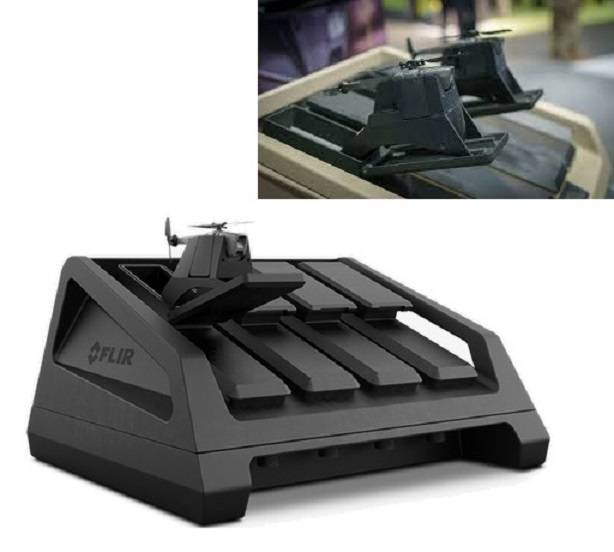
Black Hornet VRS
Is it advisable to equip micro-UAVs with a warhead to turn them into kamikaze microdrones?
It is difficult to destroy armored vehicles with them. If only to damage sensitive elements - reconnaissance means, some vulnerable structural elements.
The situation with manpower is different.
On the one hand, the technologies of personal body armor (NIB) are constantly being improved: Armor of God: technologies for promising means of individual armor protection, and in the near future will reach such a level at which the existing mass samples of small arms weapons will not be able to provide sufficient efficiency in the defeat of enemy manpower.
On the other hand, in military conflicts, small arms still provide defeat from 30% to 50% of the enemy's manpower. An increase in the effectiveness of PPE will lead not only to a decrease in the effectiveness of small arms, but also to a decrease in the effectiveness of high-explosive fragmentation warheads: Battle suit. Wound statistics, bullets and splinters.
One of the ways to solve this problem is to create promising small arms with improved characteristics. In particular, the USA is actively developing advanced small arms program NGSW (Next Generation Squad Weapon Rifle).
In Russia, even if such developments are underway, their details are classified. Potentially promising Russian small arms can be created on the basis of Soviet cartridge 6x49 mm or arrow-shaped sub-caliber ammunition (which is less likely in the foreseeable future).
However, the emergence of more effective models of small arms does not solve the problem of reducing the effectiveness of high-explosive fragmentation ammunition, such as grenades of underbarrel and automatic grenade launchers, hand grenades and other ammunition with light fragments.
Potentially strengthening the NIB may require a transition from being hit by a fragmentation field to a direct defeat of manpower by a warhead. Just as anti-aircraft guided missiles (SAM) and air-to-air (V-B) missiles have gone from fragmentation to hit-to-kill targets.
The weight and size characteristics of existing and prospective micro-UAVs make it possible to place on them a small-sized warhead capable of defeating fighters protected by any existing and promising personal protective equipment. And the guidance system will allow the micro-UAV to hit the target directly.
The question of price immediately arises. If, in the event of the defeat of military equipment, the cost-effectiveness criterion will work in favor of the UAV, then will it be economically justified to use micro-UAVs against manpower?
On the one hand, the cost of the small arms themselves is low compared to other types of weapons.
On the other hand, according to statistics, thousands and even tens of thousands of cartridges are spent on hitting one target.
During the First World War, for every soldier killed by a bullet, 7000 cartridges were spent. During the Second World War - 25 rounds. In the Korean War, 000 rounds. In the Vietnam War - 50 rounds. In the Soviet military conflict in Afghanistan - 000 rounds of ammunition per person killed.
Of course, these numbers do not account for many factors. And, most likely, they are greatly overestimated. But even if we reduce the number of cartridges spent per killed by an order of magnitude, we still get a figure of 20-25 thousand cartridges.
The retail price of the cartridge 5,45x39 mm is 10-15 rubles, the wholesale price is 5-7 rubles. The cost of delivery for the military is supposed to be 1-3 rubles.
In total, one killed enemy soldier costs 20-75 thousand rubles, or about 250-1000 dollars at the current exchange rate.
Destruction of the enemy with other types of weapons is not cheaper - shells, missiles, mines cost even more money, as do the hours of flight or operation of military equipment.
And if the cost of the Black Hornet Nano micro-UAV is presumably quite high and can range from several thousand dollars, then commercial models of similar dimensions, having, albeit smaller, but comparable characteristics, are much cheaper.
Commercial micro UAVs
The most inexpensive models sold in Chinese online stores cost about 1000-5000 rubles.
Made of plastic, weighing from several tens to several hundred grams, they have a built-in gyroscope, electric motors and lithium batteries, a color video camera of HD format and above. Chinese microdrones can be controlled using a smartphone fixed in a special remote control, or using virtual reality glasses based on the same smartphone.
The flight time of such micro-UAVs is 5–15 minutes, the flight range is up to several tens of hundreds of meters, and the speed is 3–7 m / s.
One of the most advanced non-professional models is the DGI Mavic Mini UAV weighing 249 grams. Its dimensions in the folded state are 140x82x57 mm, in the unfolded state with screws 245x290x55 mm. The cost of the DGI Mavic Mini UAV is about 35-40 thousand rubles.
The rate of climb of the DGI Mavic Mini UAV is up to 4 m / s, the maximum speed is up to 13 m / s, the permissible wind speed is up to 8 m / s. The maximum flight altitude is 3 kilometers (for such a kid!), The maximum flight range is up to two kilometers (limited by the video signal transmission range), the flight time is up to 30 minutes. The UAV camera DGI Mavic Mini is stabilized in three planes.
Another interesting type of “household” UAVs is the so-called “selfie UAVs”. The mass of such drones is in the range of 50-300 grams, the flight time is about 15 minutes.
In addition to their small dimensions, they are distinguished by ease of use, ease of portability and primitive control (the user should take a photo of himself or herself, and not be distracted by controlling the drone).
One of the most interesting models is the Italian micro-UAV AirSelfie. Its weight is only 80 grams, the body is metal, all moving parts are closed. The dimensions of the AirSelfie UAV are comparable to those of a smartphone. The flight height is up to 10 meters. (Most likely, more. Otherwise, it would stop working when the height difference. For example, it would work on the first floor, but not on the fifth). The range of video signal transmission from a 12-megapixel camera is up to 250 meters.
Military micro UAVs
The military is also developing micro-UAVs.
In addition to the aforementioned Black Hornet Nano, one can recall the Cicada microdrones project.
Its distinctive features should be minimal visibility and cost - in case of mass production, it should be $ 250 per unit. The Cicada has no engine. Its launch is carried out from an air carrier. And then she glides silently at speeds up to 74 km / h.
During the tests, the Cicada UAVs were launched from an altitude of 17500 meters. Then they flew about 20 kilometers and landed 5 meters from their target.
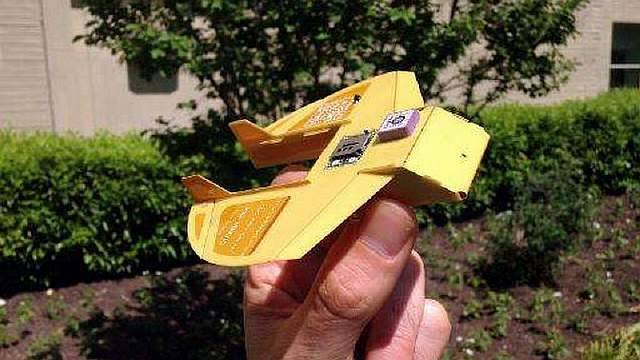
Micro-UAV "Cicada"
Cicada drones are of little use to defeat the enemy. But they can "open up" the enemy's positions, preparing the ground for a subsequent strike.
Another interesting project is the GLUAS (Grenade Launched Unmanned Aerial Systems) micro-UAV project, launched from a standard army 40-mm M-203 grenade launcher. Two versions are being developed - one according to the paragliding scheme, the other - of the helicopter type. Both versions should have a flight altitude of up to 600 meters and a flight time of up to 90 minutes. The video transmission range is up to two kilometers.
At the moment, the GLUAS micro-UAV is planned to be used for terrain reconnaissance and target detection. But in the future, it is impossible to exclude their use for the destruction of targets.
In Russia, CJSC Aerocon has proactively developed the Inspector-101 micro-UAV of the aircraft type, made according to the tailless design, with a pulling propeller rotated by an electric motor. The range of the Inspector-101 UAV is 1,5 km, the flight time is about 30-40 minutes at a speed of 8-20 m / s at an altitude of 25 to 500 meters. The equipment of the Inspector-101 UAV includes a fixed forward-looking video camera.
The Kronshtadt group of companies presented at the Army-2020 forum a nano-UAV of a quadrocopter type with an estimated mass of about 180 grams. Its technical characteristics are currently unknown.
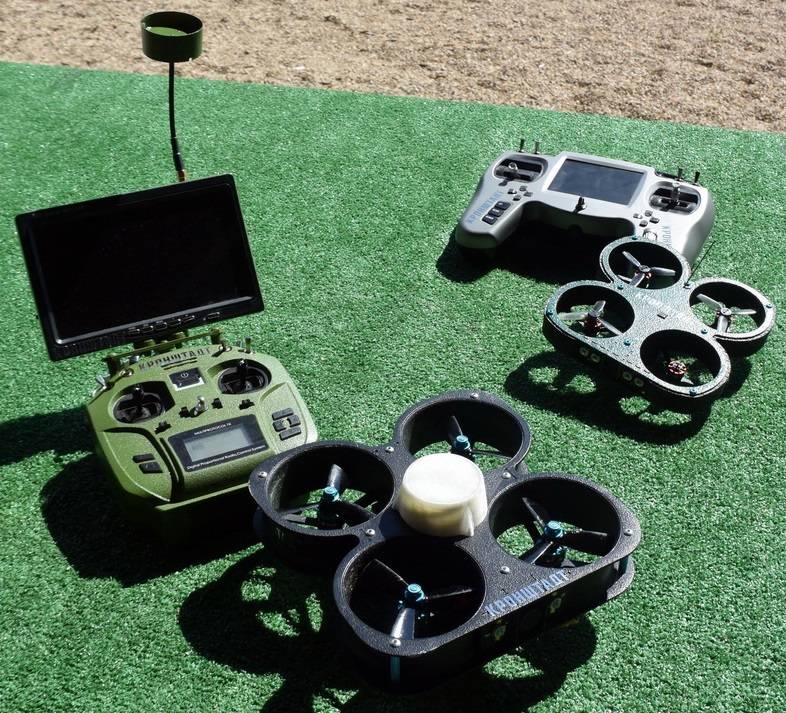
Nano-UAV of the group of companies "Kronshtadt"
Also, according to some reports, the United Instrument-Making Corporation is developing the Dragonfly UAV (there are other UAVs with the same name). This is an analogue of the Norwegian Black Hornet Nano. However, there are no details on it yet.
Warhead
Depending on the size and weight, kamikaze micro-drones can be equipped with different types of warheads. Considering that, in any case, the weight restrictions will be significant, the warheads of such a microdron will be focused on hitting one directly attacked target with a direct hit.
The simplest option is to use one or more cartridges with an electric igniter cap (EKV), fixed to the UAV in a special device. EKV can be built directly into the cartridge or installed separately, on top of the standard capsule - in this case, after the EKV is triggered, the flame force penetrates the standard cartridge capsule. The second option is easier to implement. But a separate EKV is additional mass. In addition, the triggering of an external EKV can reduce the hitting accuracy due to an additional pulse. Built-in EKVs are widely used in military weapons, and sometimes even in civilian ones.
Specialized warheads can also be created for micro-UAV-kamikaze using explosives (explosives). In this case, the defeat can be carried out both directly by the explosive, and by some ejected explosive: a damaging element or even a cumulative jet. The disadvantage of this solution is the need for maximum convergence of the micro-UAV-kamikaze with the target. Whereas the "shot" with cartridges can be carried out from a distance of 1-2 meters.
Presumably, the most effective solution can be a hybrid solution, when the explosive charge will be thrown by a small charge at the same 1-2 meters in front of the UAV and detonated when it hits the target.
Media and tactics
Potentially, all soldiers of ground units can act as a carrier of anti-personnel micro-UAV-kamikaze. For example, taking the American experience, UAVs can be launched from a standard 40-mm grenade launcher.
However, there is a management problem here. While a fighter is controlling a micro-UAV (even if the latter is highly automated), he will be greatly distracted from the environment. That is unacceptable in a combat situation and can lead to the fact that such an UAV operator will be stabbed to death with an ordinary knife. Therefore, for most of the ground fighters, micro-UAV-kamikaze will be an auxiliary weapon used in certain tactical situations.
The optimal solution could be the introduction of an individual soldier (or several soldiers) into the ground unit - a carrier / operator of a micro-UAV-kamikaze, providing fire support or even priority destruction of enemy manpower.
In the first case, it will carry out the destruction of the most difficult and dangerous targets - enemy firing points, snipers, machine gunners, grenade launchers, mortar crews and ATGMs.
In the second case, carriers / operators of micro-UAV-kamikaze will carry out a sequential search and destruction of all enemy manpower in a given area, while the rest of the fighters will cover them from a direct attack.
With a mass of a micro-UAV-kamikaze of the order of 150-250 grams in the size of a smartphone, the carrier / operator will be able to carry about 100 micro-UAV-kamikaze, installed in cassettes, in a knapsack behind his back.
The control of the micro-UAV-kamikaze will be carried out using a virtual reality display located on the fighter's helmet and lowered to the eyes during combat operations, as well as specialized controllers, in the future, integrated directly into the fighter's gloves.
In the foreseeable future, exoskeletons may appear in the armed forces, which can significantly increase the volume and mass of the carried cargo. If exoskeletons are not yet suitable for active warfare, then they may well be suitable as a means for transporting several hundred micro-UAV-kamikaze.

A fighter in an exoskeleton can carry several hundred micro-kamikaze UAVs
Also, micro-UAV-kamikaze can be placed on military equipment, in specialized unified containers - launchers. In this case, the number of microdrones on one carrier can be thousands of pieces. Also, combat vehicles can have more powerful communication systems with UAVs and comfortable working conditions for operators.
With a flight / control range of the order of 1000-2000 meters, carriers of micro-UAV-kamikaze can provide control of the territory and defeat enemy personnel over an area of three to thirteen square kilometers.
Micro-UAV kamikaze will have a huge impact on the face of the battlefield.
The concept of "shelter" will change significantly, if it remains at all. Concrete blocks, trenches, long-term firing points (pillboxes) and other protective structures will not protect against micro-UAV-kamikaze, if it is not a sealed armored shelter such as tank (against which larger kamikaze UAVs can be used).
Only advanced automatic active defense systems, which are not yet available, will be able to ensure the survival of ground units from an attack by micro-UAV-kamikaze. The capabilities of human-controlled manual systems will be very limited, since in a dynamic battle, a person can easily miss a compact, unobtrusive UAV and miss an attack.
The micro-UAV-kamikaze will have a huge impact on the conduct of hostilities in the city.
Instead of using heavy weapons used to clear buildings by actually destroying them (which creates a huge risk for the civilian population), or a complex and heavy assault with inevitable losses, the cleaning of buildings will be carried out with microdrones capable of detecting, destroying or blocking the enemy.
Conclusions
The improvement of technologies has a significant impact on the complexity of the production of certain types of military equipment. What 20-30 years ago seemed impossible or was considered a matter of the distant future is becoming something everyday, not surprising.
The use of commercial UAVs in all spheres of human life will cause their extraordinary spread. This means that their components will become widely available as spare parts for cars or household appliances. The technical characteristics of drones will improve - the weight and dimensions will begin to decrease, while the autonomy, flight range and carrying capacity will increase. UAV control algorithms will also be improved - there will be a possibility of fully autonomous or semi-autonomous flight, including indoors.
For a fighter controlling a UAV, this will mean that he will not be an “operator” controlling the UAV, but an “organizer” of the actions of a group of UAVs, receiving images from launched drones and indicating the targets being hit with gestures or aiming his gaze.
Formally, micro-kamikaze UAVs will not replace rifles and other small arms on the battlefield.
But in fact, if developed means of countering such weapons are not created, micro-UAV-kamikaze can ensure the defeat of more enemy manpower than any other types of anti-personnel weapons.
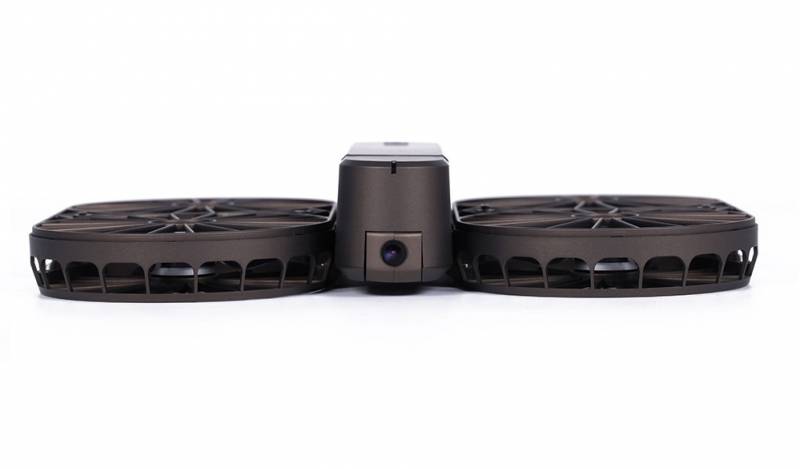
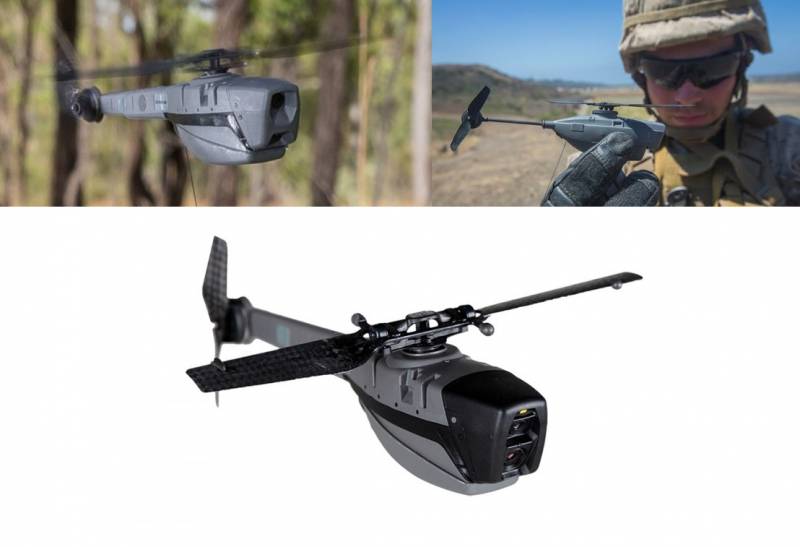
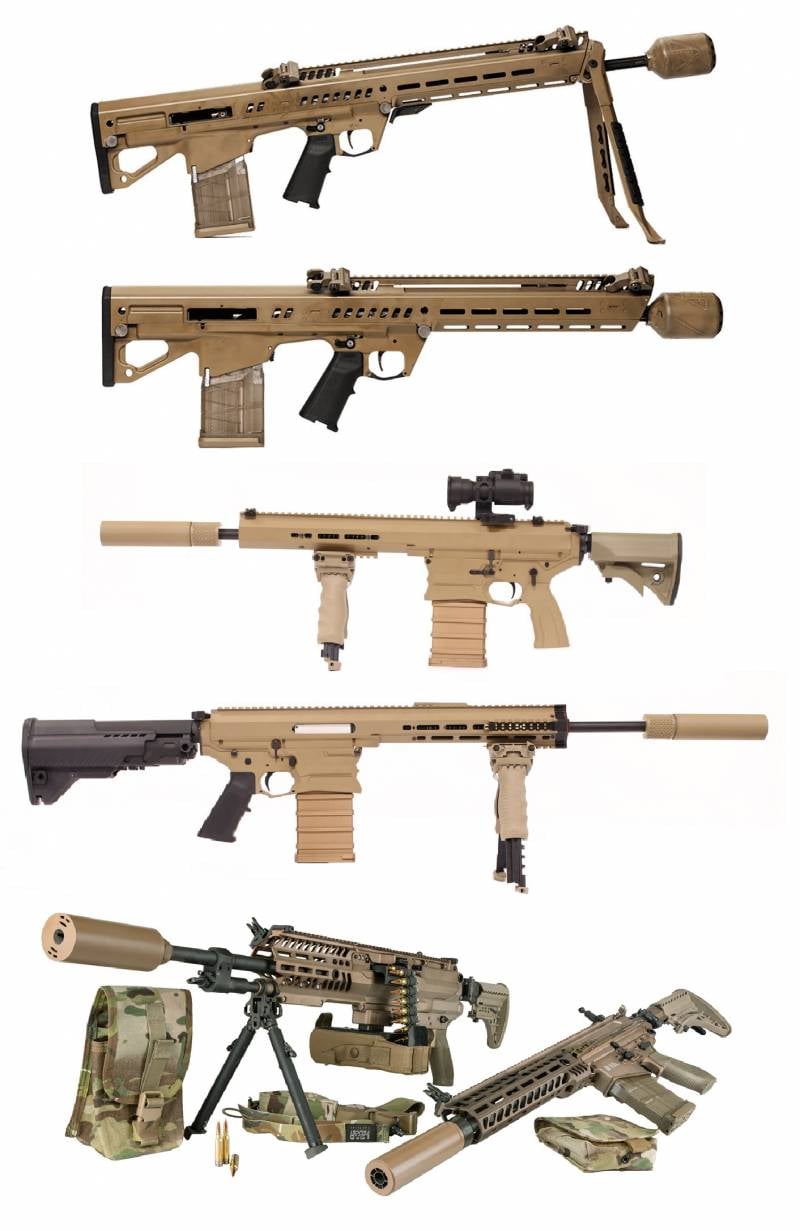
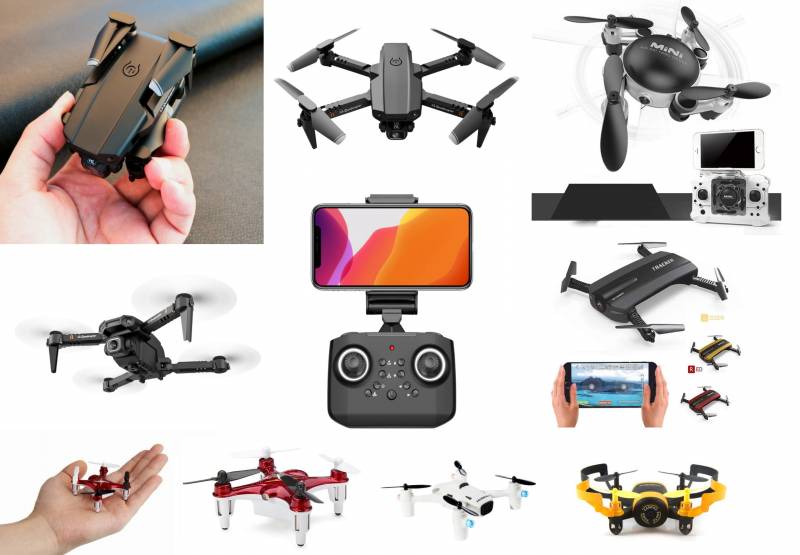

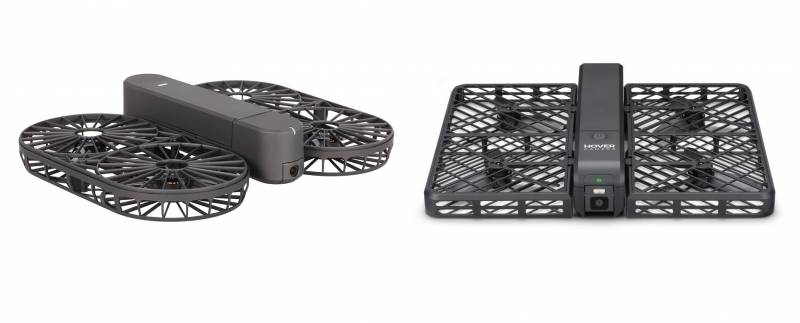
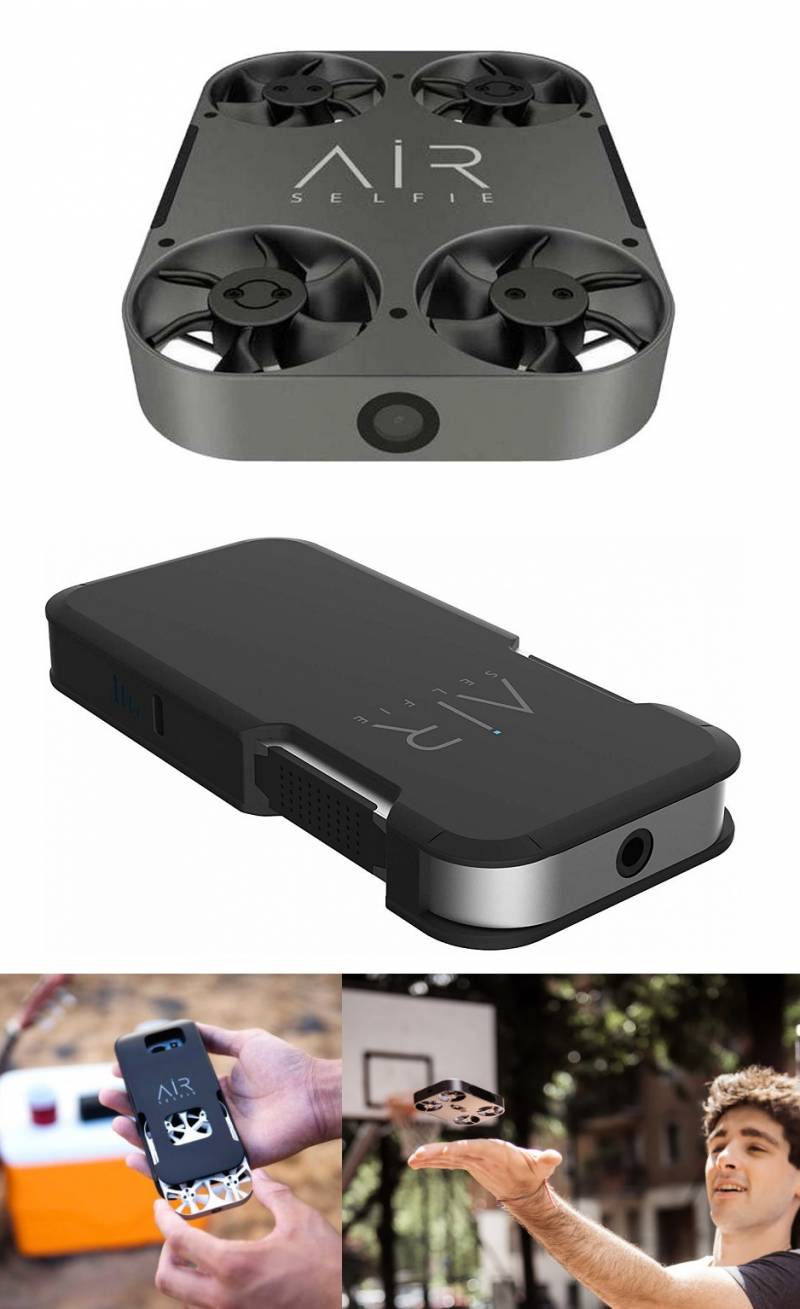
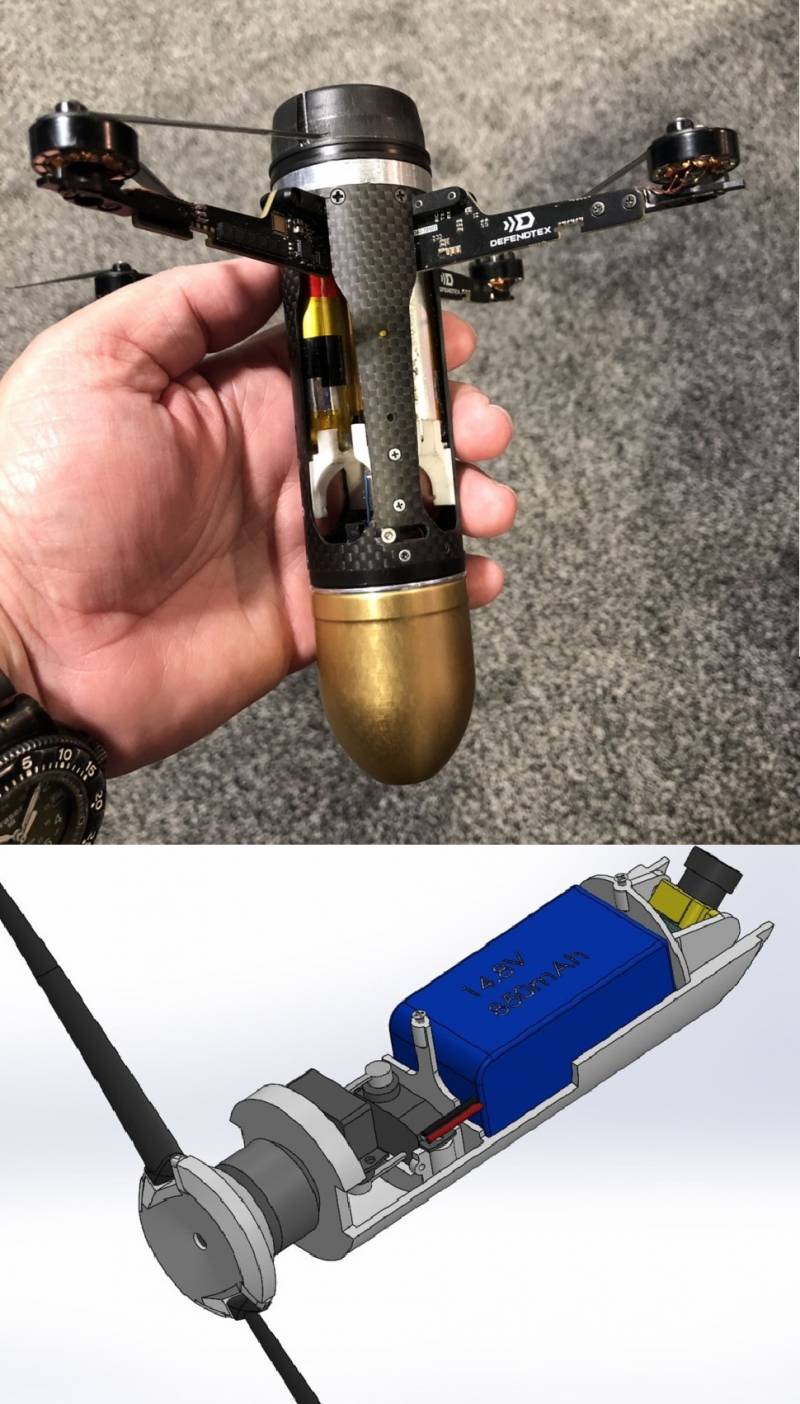
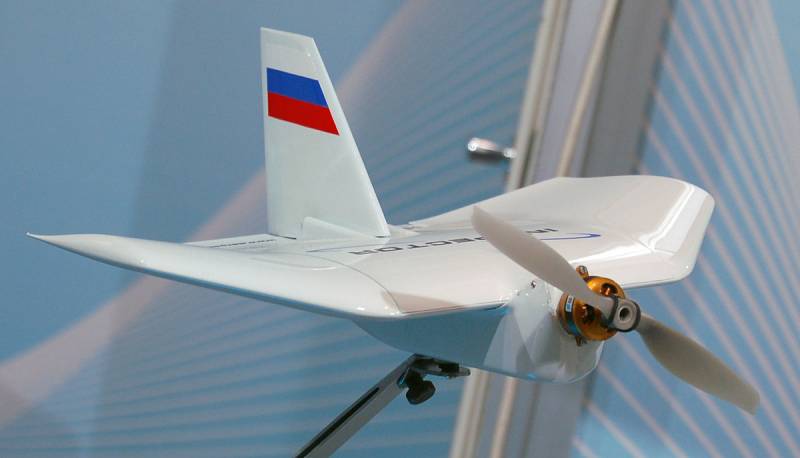
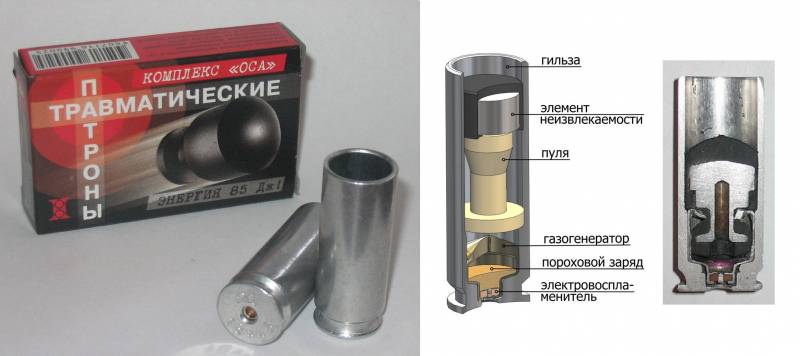

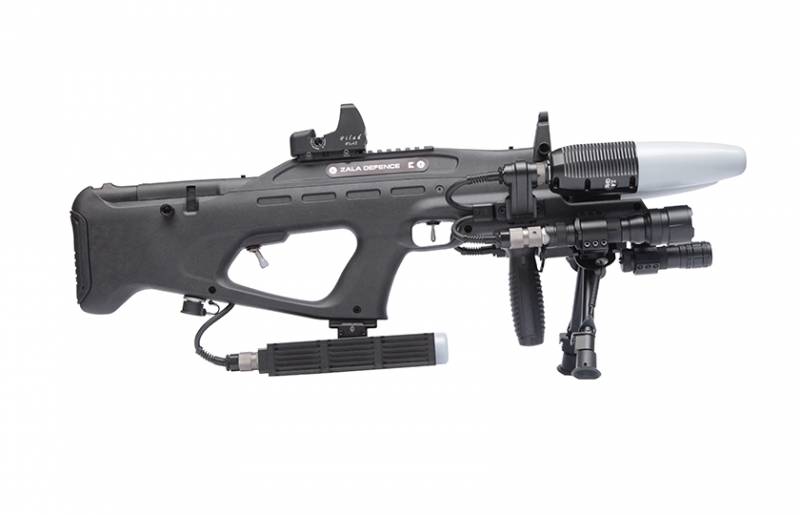
Information